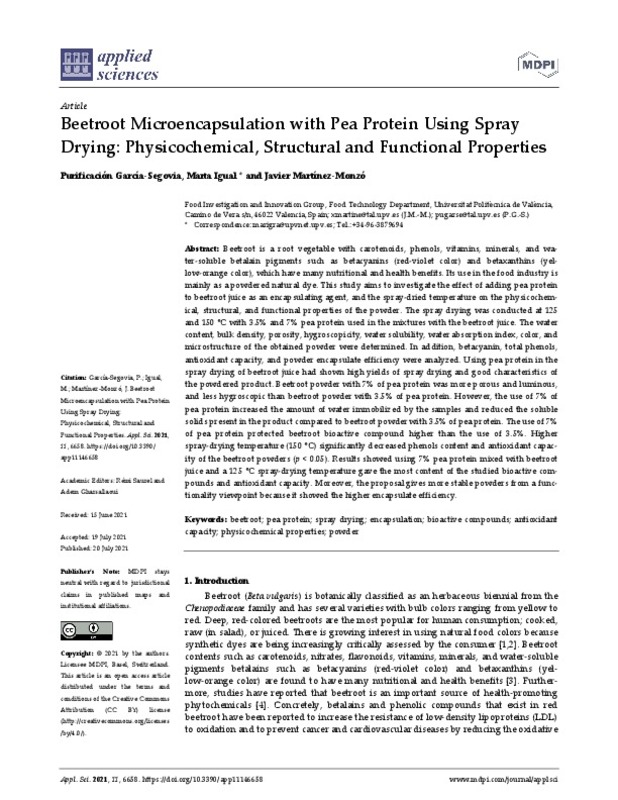JavaScript is disabled for your browser. Some features of this site may not work without it.
Buscar en RiuNet
Listar
Mi cuenta
Estadísticas
Ayuda RiuNet
Admin. UPV
Beetroot Microencapsulation with Pea Protein Using Spray Drying: Physicochemical, Structural and Functional Properties
Mostrar el registro completo del ítem
García-Segovia, P.; Igual Ramo, M.; Martínez-Monzó, J. (2021). Beetroot Microencapsulation with Pea Protein Using Spray Drying: Physicochemical, Structural and Functional Properties. Applied Sciences. 11(14):1-14. https://doi.org/10.3390/app11146658
Por favor, use este identificador para citar o enlazar este ítem: http://hdl.handle.net/10251/182276
Ficheros en el ítem
Metadatos del ítem
| Título: | Beetroot Microencapsulation with Pea Protein Using Spray Drying: Physicochemical, Structural and Functional Properties | |
| Autor: | ||
| Entidad UPV: |
|
|
| Fecha difusión: |
|
|
| Resumen: |
[EN] Beetroot is a root vegetable with carotenoids, phenols, vitamins, minerals, and water-soluble betalain pigments such as betacyanins (red-violet color) and betaxanthins (yellow-orange color), which have many nutritional ...[+]
|
|
| Palabras clave: |
|
|
| Derechos de uso: | Reconocimiento (by) | |
| Fuente: |
|
|
| DOI: |
|
|
| Editorial: |
|
|
| Versión del editor: | https://doi.org/10.3390/app11146658 | |
| Tipo: |
|









